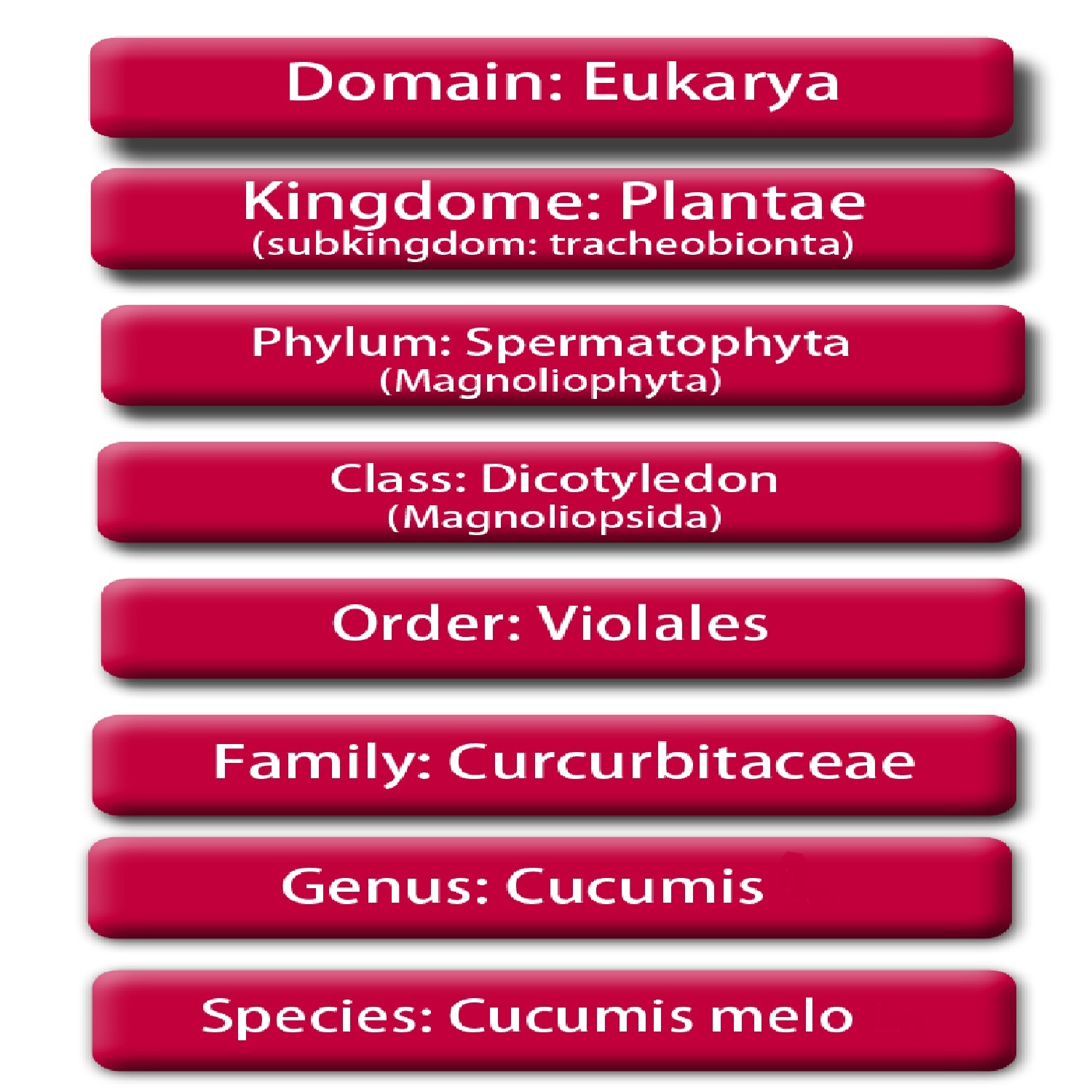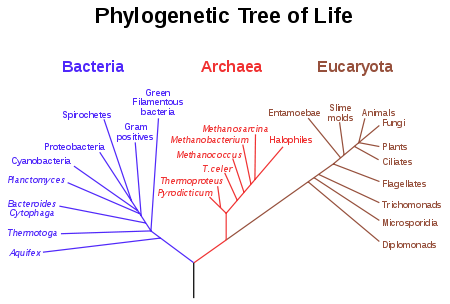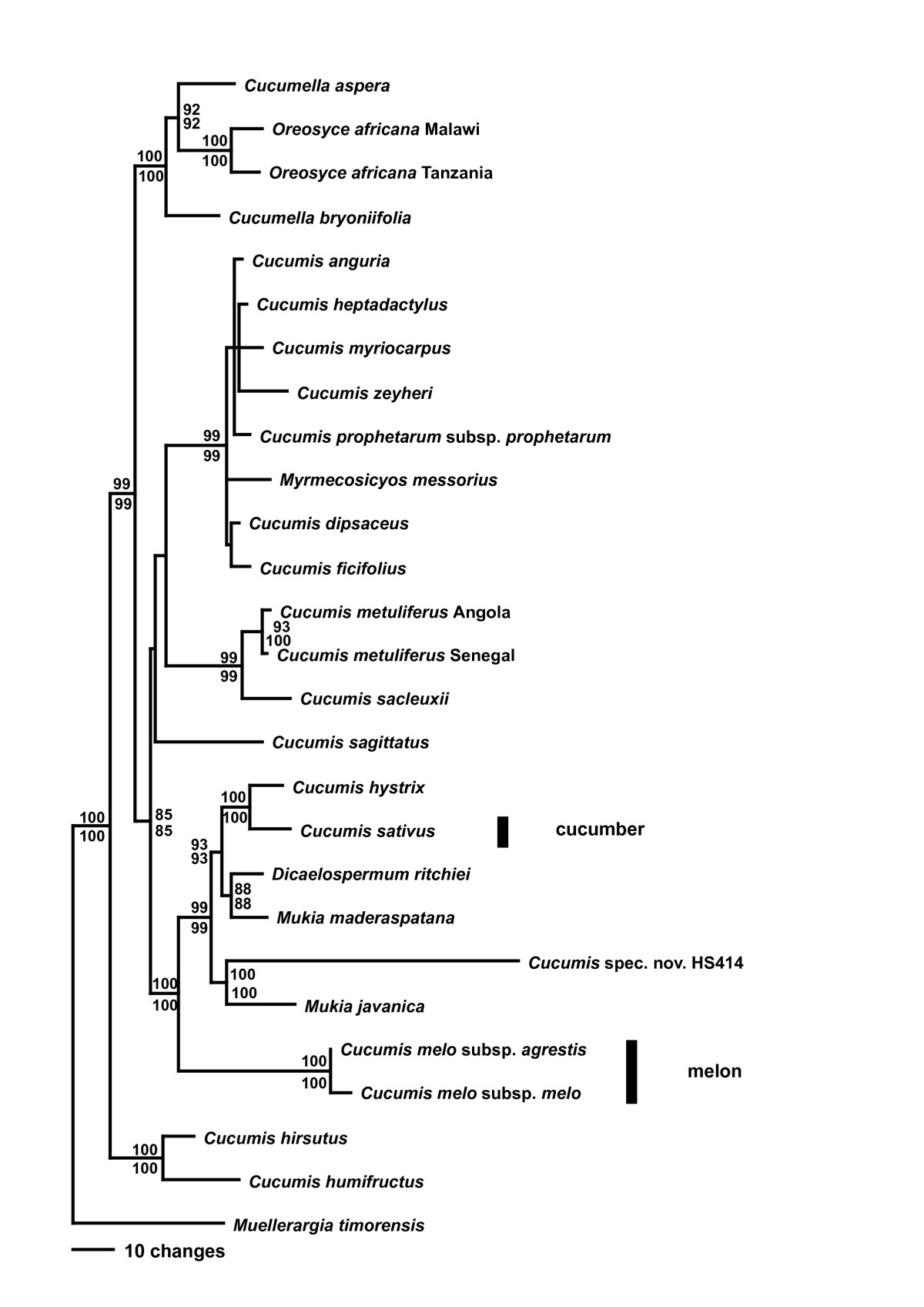Classification of Cucumis melo

Domain: Eukarya
Kingdom: Plantae (subkingdom: tracheobionta)
Phylum: Spermatophyta (Magnoliophyta)
Class: dicotyledon (Magnoliopsida)
Order: Violales
Family: Cucurbitaceae
Genus: Cucumis
Species: Cucumis melo
Domain Eukarya: Cantaloupe is a Eukaryote because of its multicellularity and that each cell has a nucleus. Another example of a Eukarya is a pineapple.
Kingdom Plantae: Cantaloupe is a member of the kingdom plantae. This is made obvious by how the plant's cell walls are made of cellulose. Cantaloupe is autotrophic so you're not going to be seeing it catch a deer and eat it. They obtain energy through a process known as photosynthesis. Members of this kingdom also have organs and organ systems. Another notable example of this phylum is the kiwifruit.
Phylum Spermatophyta: Spermatophyta is a general phylum of all seed-bearing plants. Cantaloupe produces seeds and has a delicious fruit coat protecting the seeds.
Class dicotyledon: Dicotyledons produce an embryo with two cotyledons. Also, their flower organs usually are arranged in four to five leaves with net-like veins and presence of cambium tissue in the stems.
picture
Order Violales: Members of Violales are unilocular (Having a single compartment in the fruit), with a compound ovary with parietal placentation. The flowers of this order have stamens in a centrifugal pattern.
Family Cucurbitaceae : Members of this family found in the warmer regions of the world, and usually has a edible fruit. It is also monophyletic or developed from a single common ancestor.
Genus Cucumis : Members of this genus usually have creeping vines with large leaves. The fruit of this genus are usually spherical. Another notable example of this genus is the cucumber.
Species Cucumis melo : Cucumis melo is the scientific binomial name for Cantaloupe. The literal translation of this is muskmelon.
Below is a general example of a phylogenetic tree, with canataloupe falling under the Eukarya domain under the kingdom of plants (plantae). In relation with other kingdoms, it is most related to animals and fungi.

image below by Renner S, Schaefer H, Kocyan A. Phylogenics of Cucumis
 The above phylogenetic tree shows how the family Cucumis
separates based on genetic data. It can be seen that cucumber
and melon are closely related, pointing to how both are part of
the Cucurbitaceae family. To decide where each species
belongs, the researchers combined sequences from
chloroplast genes, introns, and a spacer to see the differences.
The above phylogenetic tree shows how the family Cucumis
separates based on genetic data. It can be seen that cucumber
and melon are closely related, pointing to how both are part of
the Cucurbitaceae family. To decide where each species
belongs, the researchers combined sequences from
chloroplast genes, introns, and a spacer to see the differences.
Home click here to proceed to habitat
